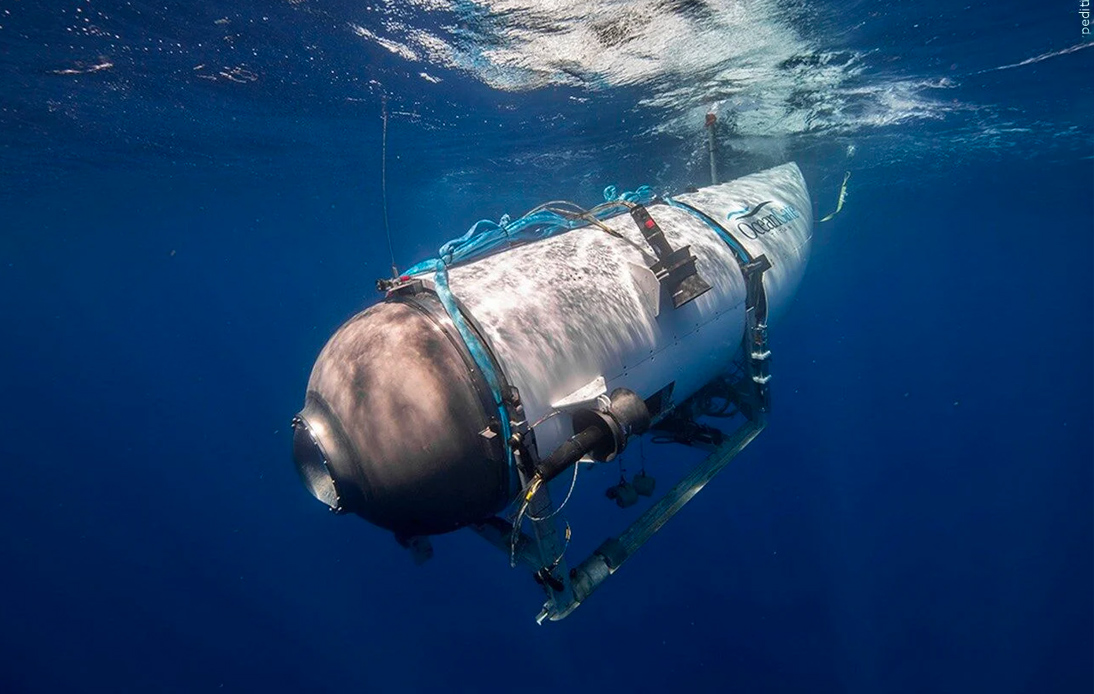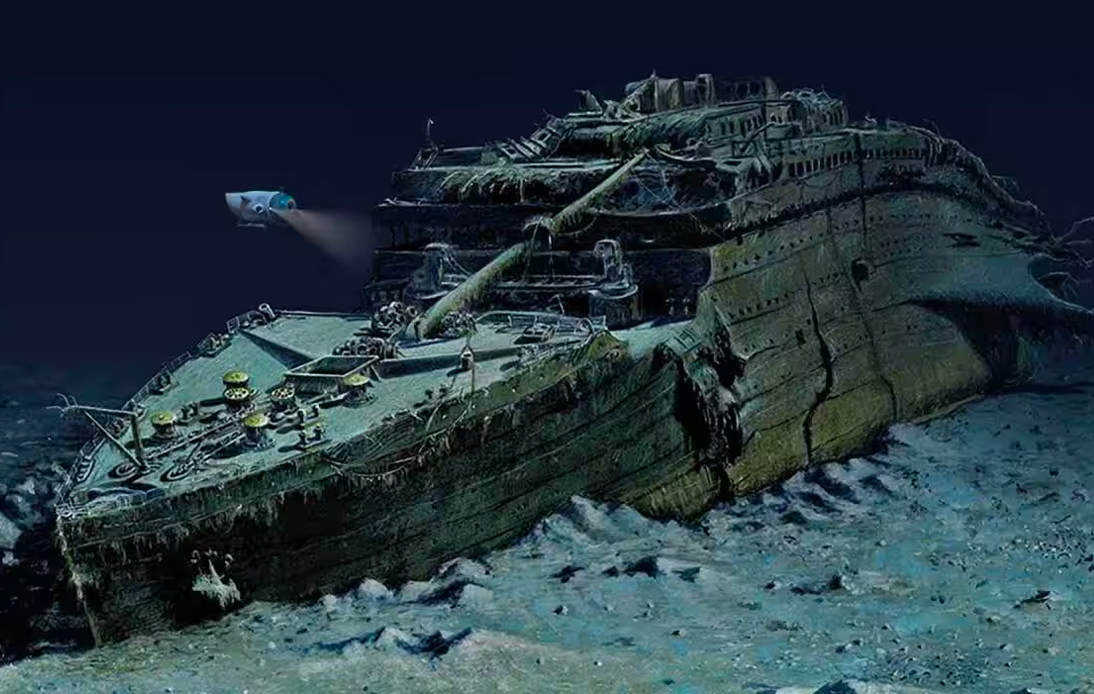
An extensive search and rescue mission is currently underway in the mid-Atlantic after a tourist submarine, carrying five people, disappeared during a Sunday dive into the Titanic wreckage.
The US Coast Guard reported that contact with the small submarine was lost approximately one hour and 45 minutes into its dive.
OceanGate, the tour company, has said they’re considering every possible solution to save the five individuals onboard.
For an eight-day trip which includes dives to the wreckage situated 3,800m (12,500ft) below, the tickets are priced at $250,000 (£195,000).
Assisting in the rescue operation are government organizations, the US and Canadian militaries, and commercial deep-sea companies, according to officials.
The Titanic wreckage is located approximately 435 miles (700km) south of St John’s, Newfoundland. However, the rescue mission is coordinated from Boston, Massachusetts.
The missing vessel is suspected to be Titan, OceanGate’s submersible that is about the size of a truck, capable of accommodating five individuals, and typically dives with an emergency oxygen supply that lasts four days.
On Monday afternoon, Rear Adm John Mauger of the US Coast Guard said during a press briefing: “We anticipate there is somewhere between 70 and the full 96 hours available at this point.”
He added that two aircraft, a submarine, and sonar buoys were part of the search for the vessel. However, the remote location of the search area was complicating operations.
“We are taking this personally” and doing everything possible to bring the people onboard “home safe”, stated Rear Adm Mauger.
Among those in the missing submarine is Hamish Harding, a 58-year-old British billionaire entrepreneur and adventurer, according to his family.
Mr. Harding posted on social media over the weekend that he was “proud to finally announce” his participation in the Titanic wreck mission.
However, he noted due to the “worst winter in Newfoundland in 40 years, this mission is likely to be the first and only manned mission to the Titanic in 2023”.
He later posted: “A weather window has just opened up and we are going to attempt a dive tomorrow.”
The “entire focus [was] on the crew members in the submersible and their families”, said OceanGate.
The company expressed deep gratitude for the extensive aid received from multiple government bodies and deep-sea businesses in their efforts to regain contact with the submarine.
Offering an eight-day journey on its carbon-fiber submarine, the company describes the experience as a “chance to step outside of everyday life and discover something truly extraordinary”.
According to their website, one expedition is currently in progress and two more are scheduled for June 2024.
Typically, the submersible carries a pilot, three paying customers, and what the company refers to as a “content expert”.
The journey embarks from St John’s, Newfoundland. The full dive to the wreckage, including descent and ascent, is said to take approximately eight hours.
Among the three submersibles owned by OceanGate as listed on their website, only the Titan is capable of diving deep enough to reach the Titanic wreckage.
The vessel weighs 23,000 lbs (10,432 kg) and, as per the website, can reach a maximum depth of 13,100 ft and has a life support system for five crew members lasting 96 hours.
The expedition involved a ship named the Polar Prince, used to transport submersibles to the wreckage site, as confirmed by its owner to the BBC.
CBS reporter David Pogue who previously traveled in the Titan submersible, revealed the challenges faced by the submarine crew and land team, stating that underwater communication is impossible without GPS or radio signals.
“When the support ship is directly over the sub, they can exchange text messages, but there’s no response anymore,” noted Mr. Pogue.
Mr. Pogue emphasized that the passengers cannot escape the locked vessel without the crew’s assistance, even if they reach the surface by themselves
The Titanic, the biggest ship of its time, hit an iceberg during its inaugural journey from Southampton to New York in 1912. More than 1,500 of the 2,200 passengers and crew onboard perished.
The wreck has been the subject of numerous explorations since its discovery in 1985.
The wreck is divided into two parts, the bow and the stern, separated by about 2,600ft, and is surrounded by a vast field of debris.
Last month, a comprehensive digital scan of the wreck was created using deep-sea mapping. The scan reveals both the enormity of the ship and minute details, such as the serial number on one of the propellers.





















